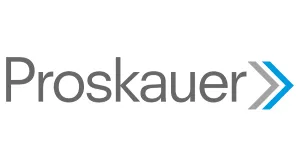- with readers working within the Banking & Credit industries
For a number of ERISA, tax and other regulatory reasons, it may be desirable for the manager or sponsor of an investment fund or other structure to utilize what is often referred to as a plan asset "hard-wired" conduit feeder. Tune in to this podcast as partner Ira Bogner and senior counsel Adam Scoll discuss more about these structures, and the advantages they can provide.
Adam: Hello, and welcome to The Proskauer Benefits Brief – Legal Insights on Employee Benefits and Executive Compensation. I'm Adam Scoll, senior counsel in the firm's Boston office and I'm here with Ira Bogner, partner in our NY office, and today we will be discussing ERISA Plan Asset "Hard-Wired" Conduit Feeders.
So, just to set the stage here, we are generally speaking about a situation where the main investment vehicle in a structure (such as a private investment fund) is being operated in compliance with an exception to holding "plan assets" under ERISA, such as by staying under the ERISA 25% limit or qualifying as a VCOC. For purposes of this discussion, we'll call that main investment vehicle the "master fund".
Ira: And, as we've discussed in prior podcasts, when an entity is operated in compliance with an exception to holding "plan assets" under ERISA, the entity and the manager thereof will generally not be subject to ERISA's fiduciary duties or prohibited transaction rules. So, for purposes of this discussion, we are assuming that the master fund will not be an ERISA-covered vehicle.
Adam: Right, but for a number of reasons, the manager or sponsor of an investment structure may want to offer up one or more feeder investment vehicles, usually to address a tax or other regulatory concern of certain investors. And quite often, any such feeder vehicle is intended to invest only in the master fund, so that ultimately all investors in the feeder vehicle will participate in the same pool of investments as investors that participate directly in the master fund.
Ira: And for a variety of reasons, it is sometimes difficult for a feeder vehicle to comply with a plan assets exception – especially where the feeder vehicle is structured in a way to be particularly desirable for US tax exempt investors, including ERISA plans.
Adam: Right. Generally speaking, a feeder vehicle is going to have difficulty complying with the requirements to be a VCOC given that it only invests in the master fund, and not into "operating companies". And if the feeder vehicle is structured so as to be desirable to ERISA plan investors, the feeder vehicle might end up not being able to stay under the ERISA 25% limit.
Ira: And if that is the case, and the feeder vehicle will hold "plan assets" subject to ERISA (because it will be over the ERISA 25% limit and will not be able to qualify for a plan assets exception), there are numerous potential ERISA-related benefits to structuring the feeder vehicle as what is often referred to as a "hard-wired conduit" that can only invest in the master fund.
Adam: And when we refer to "hard-wiring", we generally mean drafting the feeder vehicle's governing documents in such a manner so that, to the maximum extent possible, no investment activity will take place at the feeder vehicle level and so that the manager thereof will not have any discretionary authority or control over the assets of the feeder.
Ira: Right. More specifically: (i) the feeder will be "hard-wired" to invest all of its investable assets in the master fund only; (ii) when feeder investors contribute funds to the feeder vehicle, the feeder investors effectively direct that such funds will be invested into the master fund; (iii) when the master fund distributes funds to the feeder vehicle, such funds are pushed out to the feeder investors; and (iv) all investment activity will take place at the master fund level. And there are some relatively standard provisions that are typically included in the governing documents of "hard-wired" conduit feeders that help to achieve such result.
Adam: If a feeder vehicle holds "plan assets" subject to ERISA, then the fiduciary responsibility and prohibited transaction provisions of ERISA technically will apply thereto. However, if the feeder vehicle is properly structured as a "hard-wired" conduit vehicle, such a structure should minimize (but does not necessarily eliminate) the likelihood that the manager thereof will be considered a "fiduciary" under ERISA or will engage in a non-exempt "prohibited transaction" under ERISA. Unfortunately, "hard-wiring" a feeder vehicle is sometimes more difficult than it sounds, and there are typically a number of competing interests (most related to the desire of managers to have maximum flexibility) that conflict with the goals of hard-wiring.
Ira: Also, don't forget that ERISA's bonding and indicia of ownership rules will also apply to the feeder vehicle if it holds "plan assets" subject to ERISA. There is a common misconception for investors and managers to think that, just because a feeder vehicle is "hard-wired", ERISA does not apply. We often hear managers say something along the lines of "we only do our ERISA 25% testing at the master fund level", and therefore, we don't have to worry about ERISA at the feeder vehicle level. However, if the feeder vehicle holds "plan assets" subject to ERISA, then the requirements of ERISA will apply thereto.
Adam: Thanks Ira. That concludes our discussion of ERISA Plan Asset "Hard-Wired" Conduit Feeders. Thank you all for joining us on The Proskauer Benefits Brief – stay tuned for more legal insights on Employee Benefits and Executive Compensation and be sure to follow us on Apple Podcasts, Spotify and Google Play.
[Podcast]: ERISA Plan Asset "Hard-Wired" Conduit Feeders
The content of this article is intended to provide a general guide to the subject matter. Specialist advice should be sought about your specific circumstances.



